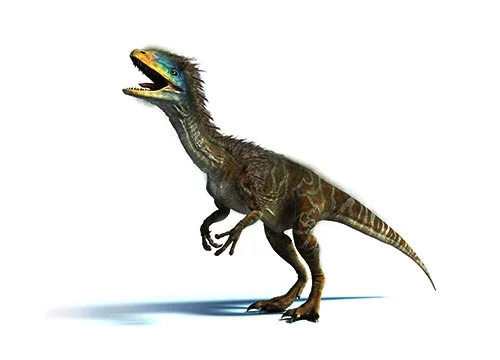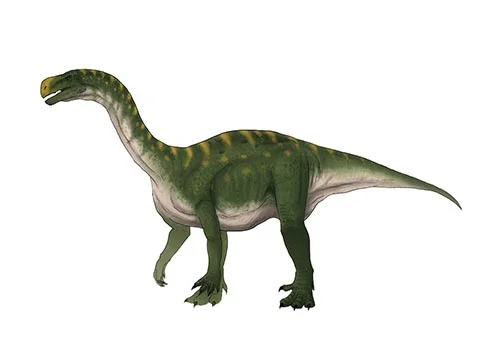Guanlong (Crown dragon)

Gwon-long
Xu et al. - 2006
Carnivore
Estimated 3 meters long
Small Theropod
G. wucaii (type)
China - Shishugou Formation
Late Jurassic, 160 million years ago
Guanlong Facts
Guanlong is a genus of small theropod dinosaur that lived in what is now China during the Late Jurassic period, around 160 million years ago. Its name means “crown dragon” in reference to the distinctive bony crest on its skull. Guanlong is known from fossils found in the Shishugou Formation in the Junggar Basin of Xinjiang, northwestern China.
Guanlong was a relatively small dinosaur, measuring about 3 meters (10 feet) in length and weighing around 70 kilograms (154 pounds). It was a member of the family Proceratosauridae, a group of theropods that were closely related to the more famous tyrannosaurs, but much smaller in size.
The most distinctive feature of Guanlong was the bony crest on its skull, which consisted of two high, narrow, and backward-curving crests over its eyes, giving it a somewhat “crowned” appearance. The function of this crest is not entirely clear, but it may have been used for display or to help regulate body temperature.
Guanlong had a typical theropod body plan, with long, powerful hind legs, a relatively short and stocky body, and a long, muscular tail. It had sharp, serrated teeth in its jaws, which were used to tear flesh from its prey.
Guanlong likely lived in a forested environment and would have been an active predator, hunting small vertebrates and possibly scavenging larger carcasses. It may have also been preyed upon by larger carnivorous dinosaurs, such as other theropods or the giant sauropods that also lived in the area.
Guanlong is an important find for paleontologists, as it is one of the earliest and most primitive known members of the tyrannosaur lineage. It provides valuable insights into the early evolution of this group of dinosaurs and sheds light on the diversity and ecology of Late Jurassic ecosystems in China.



